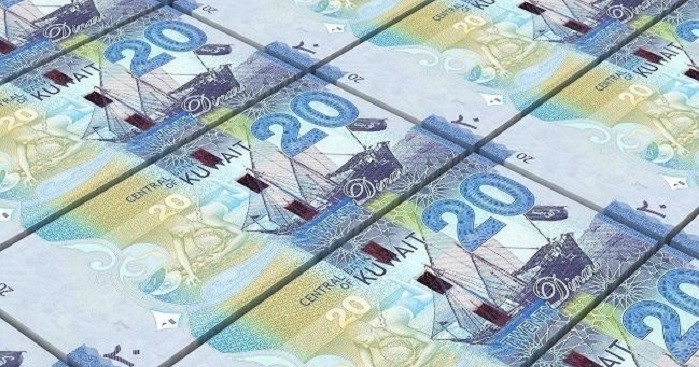Some local banks have begun to struggle to obtain new deposits in dinars, and they are nevertheless forced to raise interest rates, and exceed the rates traded in the market in tangible proportions, in an effort to attract stable funds, which are mainly from government agencies, official sources revealed to Al-Rai daily.
While the sources pointed out that the decline in the supply of local currency is not due to foreign currency deposits, in particular the dollar, whose supply is witnessing appropriate levels. The dinar dropped in the market due to the increase in demand for it in the recent period, especially after the high frequency of government withdrawals from its deposits, which reached KD466 million in the first two months in 2021, will fuel the increase in interest, which is likely to rise to higher rates in the coming period.
What strengthens the banking need for stable deposits is competition for them at prices that have recently reached about 2.6 percent, noting that individual deposits range from 1.25 to 1.5 percent.
The sources pointed out that most of the liquidity provided by the Kuwait Investment Authority to banks is in dollars and at an acceptable interest rate, which means that it cannot be relied upon to compensate the withdrawals of other government agencies, especially the General Organization for Social Insurance, which aims to reduce its liquidity to low levels in an effort to direct it to investments.
The sources noted that some banks have resorted to compensating their deficit from sufficient dinar deposits to arrange their liquidity ratios to borrow from other local banks, while waiting for any deposits that government agencies may put up to compete with at high prices, even if this leads to an increase in the cost of funds on them.
The banks that can lend are no longer able to cover the onslaught of banks ’requests, especially the small ones, because they exceed or are close to the regulated lending rates, which may lead to the closure or narrowing of one of the windows for providing money-saving funds used in arranging liquidity ratios.
Competition intensified
The sources stated that the competition that intensified between banks for dinar deposits in the recent period does not mean that they suffer from a shortage of liquidity in the local currency. On the contrary, Kuwaiti banks have been facing great pressure for some time because of the surplus existing funds they have that reached historical rates, due to the lack of available and appropriate opportunities for its absorption.
It suffices to indicate that, according to the available data, the volume of Kuwaiti bank deposits with the Central Bank of Kuwait at the end of 2019 reached about KD6.399 billion dinars, an increase of more than KD550 million compared to the levels recorded in 2018, while these deposits are likely to have recorded consecutive increases in 2020 and since the beginning of the year.
The liquidity banks have deposited with the Central Bank is high
The sources indicated that the levels of liquidity deposited with the Central Bank have witnessed a significant increase since 2016, compared to the three years that included 2008 and before, pointing out that the rates of this liquidity jumped in 2019 by about 7.7 times when compared to 2008 levels, which recorded rates of KD834 million.
In 2006, Kuwaiti bank deposits at the Central Bank amounted to KD1.3 billion dinars, which were increased in 2007 to KD1.9 billion. In 2008, in response to the repercussions of the global financial crisis, and as a flexible supervisory move to face the repercussions of this crisis on the local market, the liquidity ratios were reduced. According to the supervisory authority, deposits of Kuwaiti banks with the Central Bank decreased by 55 percent from this period, to reach KD834 million.
In comparison to the last three years, these deposits amounted to about KD4.6 billion in 2017, which were increased in 2018 to KD5.8 billion, then to KD6.4 billion in 2019. It provided an additional lending space of KD5 billion, taking into account that these sums are from banks’ funds and their precautionary reserves.

